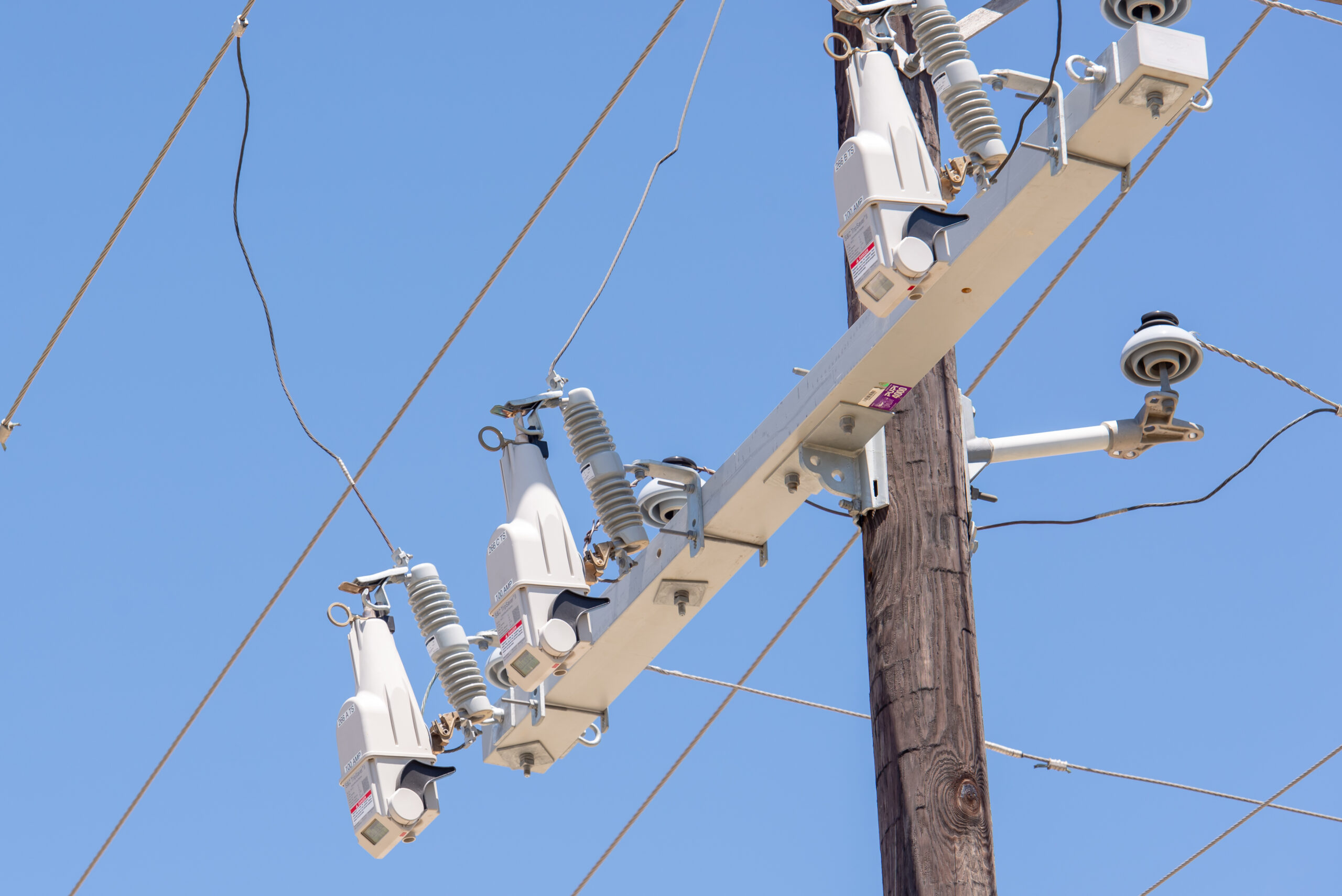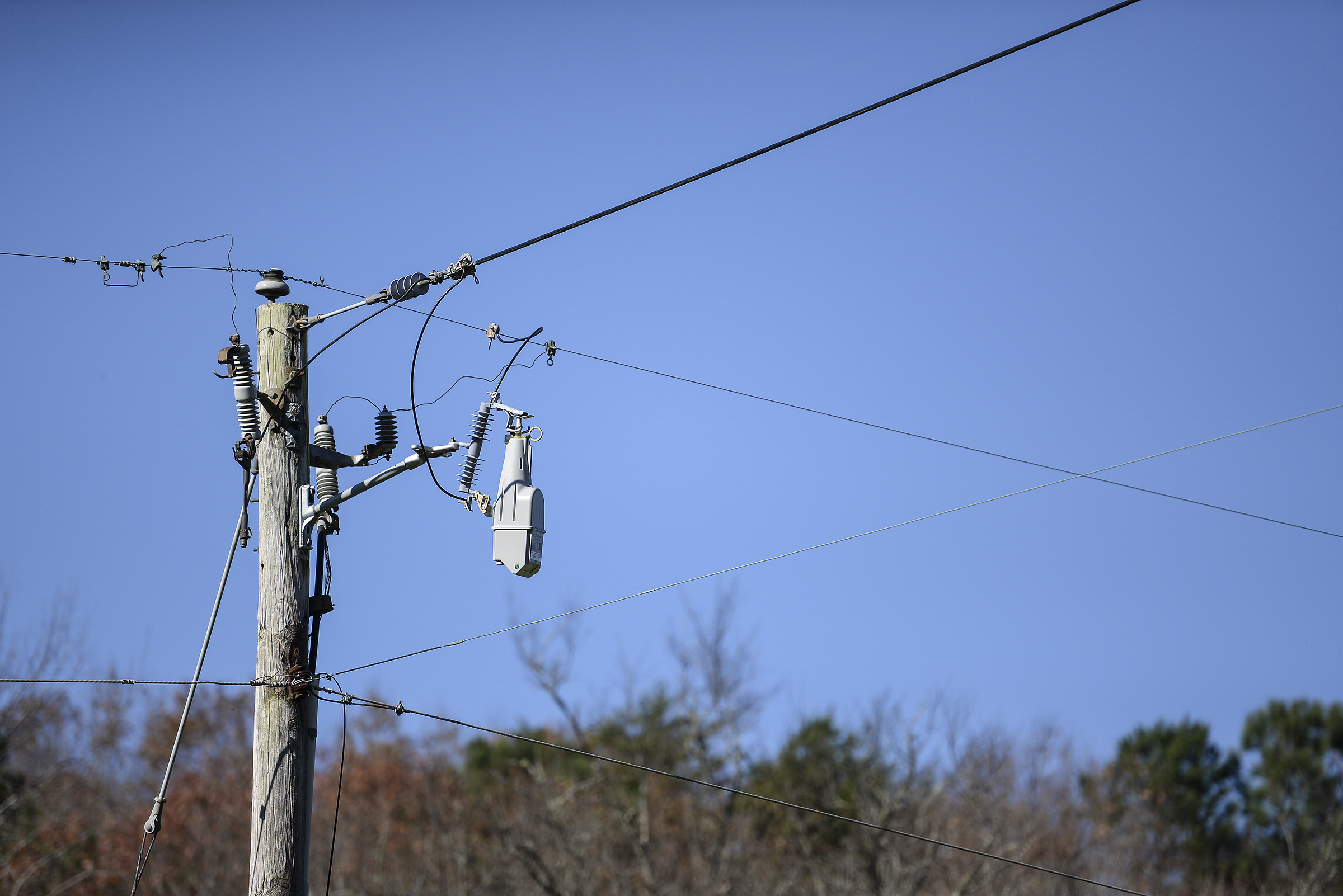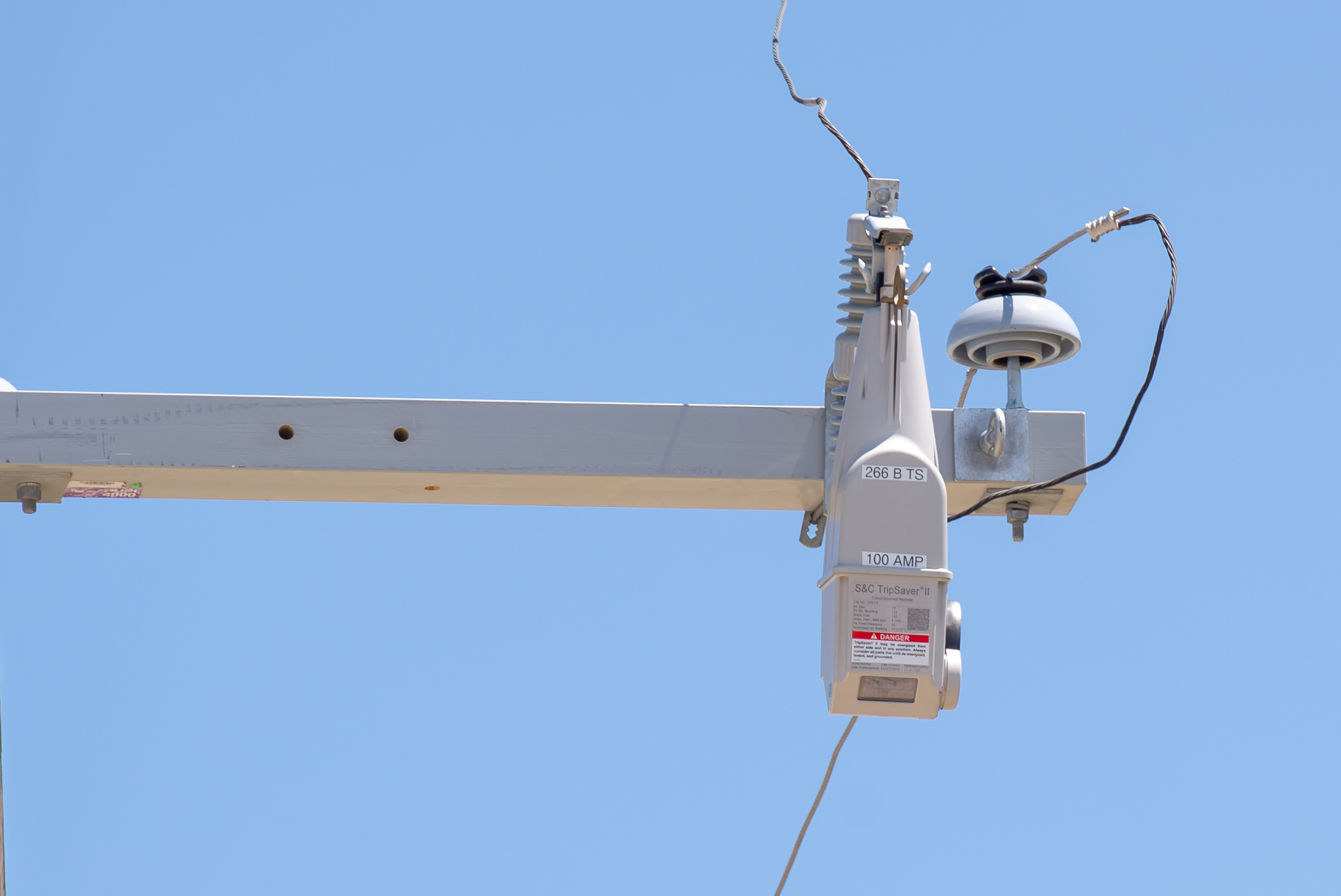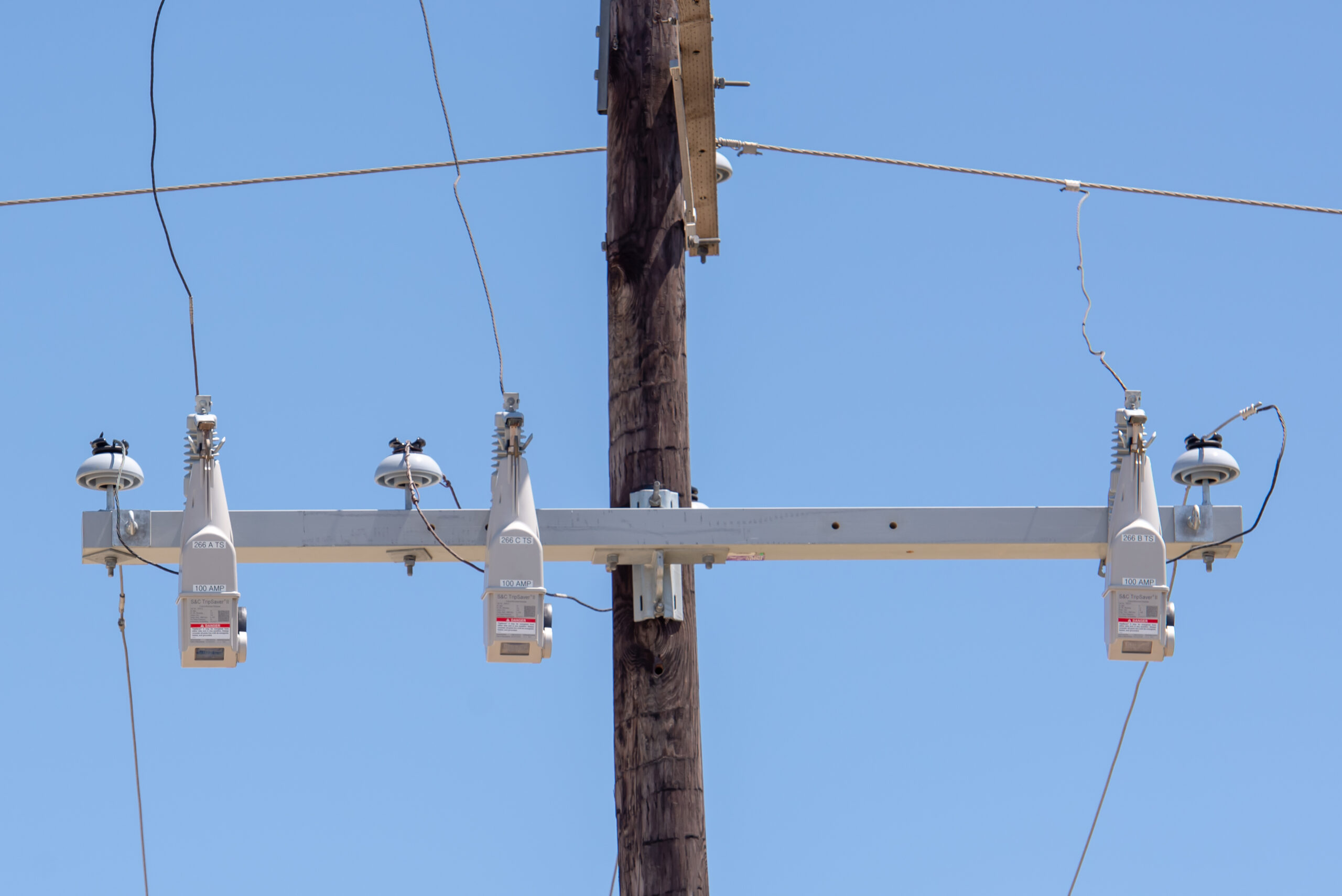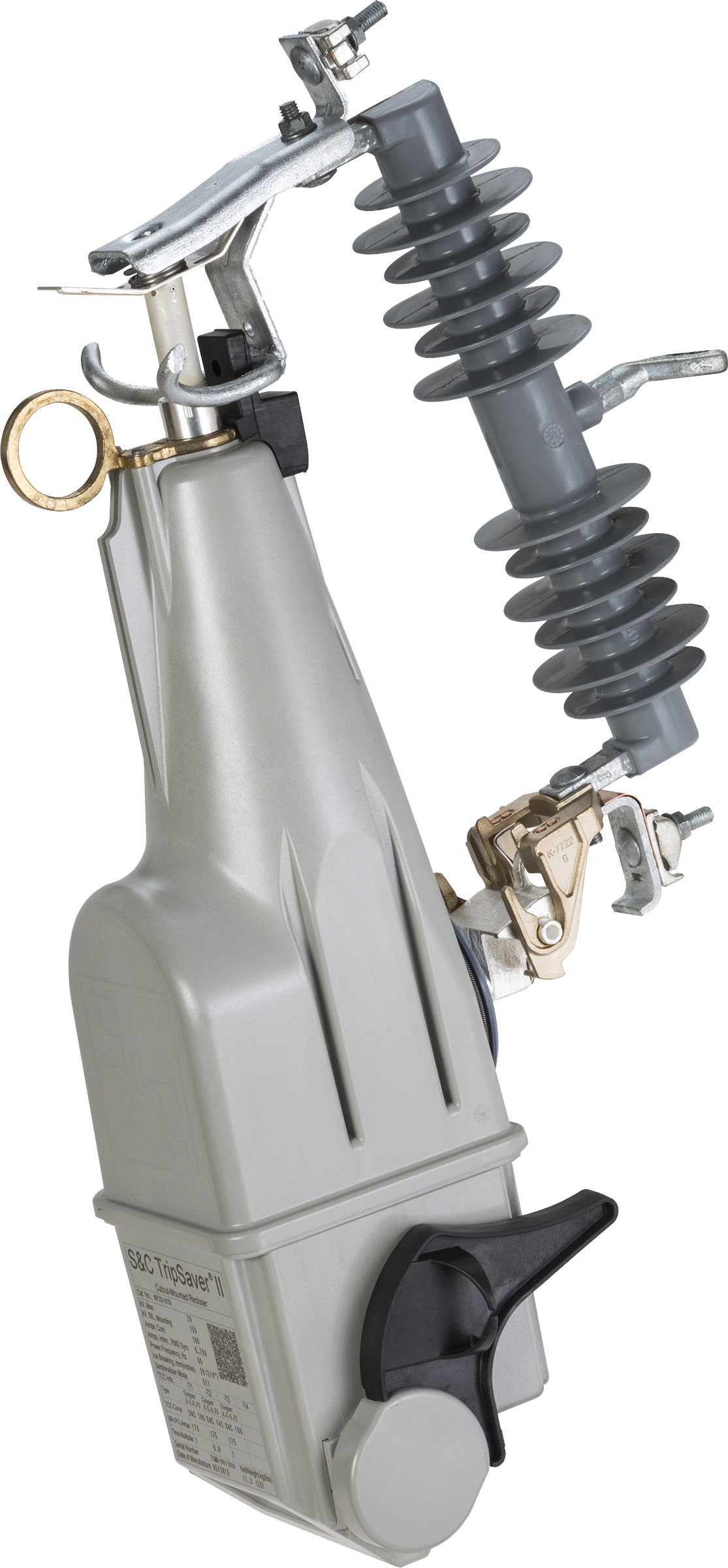- Home
- S&C Electric Product
- TripSaver® II Cutout-Mounted Recloser
TripSaver® II Cutout-Mounted Recloser
A new lateral protection strategy using S&C’s TripSaver II Cutout-Mounted Recloser can dramatically improve the way your utility responds to 80% of faults. When a fault occurs, this Smart Grid solution eliminates momentary outages for customers on the main feeder by only blinking the affected laterals. This approach saves money for the utility and its customers while improving reliability for all.
A better solution for overhead lateral circuit protection at 15 kV and 25 kVS&C’s TripSaver II Cutout-Mounted Recloser keeps the power on and avoids truck rolls. A lateral-reclosing strategy ensures transient faults do not result in a sustained interruption and other laterals on the feeder are not “blinked.” Power can be restored automatically for transient faults, avoiding a sustained outage or the need for a truck roll. Utilities will see immediate improvement in the frequency of sustained outages on their system.
Key Benefits
- Remote Drop Open
When configured with a TripSaver® II Communications Gateway, the new Remote Drop Open feature will allow a “drop open” SCADA command to be sent via DNP 3.0 through the communications gateway to the TripSaver II recloser.
- Sequence Coordination
The Sequence Coordination feature maintains proper coordination between the TripSaver II Cutout-Mounted Recloser and downstream reclosers. If a fault is cleared by a downstream recloser, the TripSaver II recloser will shift to a user configured (usually slower) time-current characteristic curve before fault testing. The TripSaver II recloser will maintain its sequence coordination setting until the Coordination Reset timer expires.
- Sectionalizing Feature
The TripSaver II recloser features a Sectionalizing mode in both 4-kA- and 6.3-kA-rated models. When enabled, the recloser will operate as a Sectionalizer over a user-specified range of fault currents when the source-side circuit breaker or recloser trips faster than the TripSaver II recloser does. It counts the number of operations of the source-side circuit breaker or recloser and drops open after a user-specified number of counts.
- Inrush-Restraint Feature
The TripSaver II Cutout-Mounted Recloser has a novel Magnetizing Inrush-Restraint feature that is always on, measuring second-harmonic current to distinguish fault current from inrush current. If inrush current is detected, the TripSaver II recloser will not trip. The Inrush-Restraint feature facilitates lower minimum pickup currents down to 5 amperes.
- Local Manual Open Feature
The Local Manual Open feature removes the requirement to use the S&C Load buster tool for load breaking by providing a manual operation sequence that commands the TripSaver II recloser to open the vacuum-interrupter contacts and drop open.
- Non-Reclose TCC Curves
In earlier firmware versions, when the TripSaver II recloser NON-RECLOSE lever was in the Down (activated) position, the instantaneous TCC curve was automatically activated. The new Non-Reclose feature allows the user to configure three TCC curves from the library for use during Non-Reclose mode. These new TCC curves are named the Standard Non-Reclose TCC curve, the Post Fault Non-Reclose TCC curve, and the Cold Wake-up Non-Reclose TCC curve. The curve that will be active is dependent on the load or fault condition prior to Non-Reclose mode activation or when a dropout previously occurred. The TCC curve selection will occur automatically without requiring the operator to manually select the appropriate settings. Non-Reclose (NR) mode can also be set remotely (Remote Non-Reclose (R-NR) mode) by a DNP 3.0 command when the TripSaver II recloser is properly configured with the gateway and transceiver.
- Gang Operation Feature
When multiple TripSaver II reclosers are properly configured together with the TripSaver II Communications Gateway, the Gang Operation feature allows any TripSaver II recloser that responds to a protection drop-open event or to a Local Manual Open drop-open event to signal the gateway to send Drop-open commands to the other configured TripSaver II reclosers.
- The Tripsaver II Recloser’s Operating Sequence
The TripSaver II Cutout-Mounted Recloser supports up to three reclosing operations (four tripping operations in total) before it drops open. Multiple varieties of time-current characteristic (TCC) curves are available. The duration of the open interval between tripping operations is user-configurable. It has a range from 0.5 seconds to 5 seconds. An option with an extended open interval of up to 30 seconds is also available. The vacuum interrupter resets 2 seconds after the TripSaver II recloser drops open. The operator can then manually close the TripSaver II recloser back in to the mounting after the repair has been made. In instances when a transient fault clears before the TripSaver II recloser reaches the end of its operating sequence, the recloser will revert to its first TCC curve after its sequence reset timer expires. The sequence reset time is also user-configurable, and it has a range from 0.5 seconds to 1,000 seconds.
- How The Tripsaver II Recloser Works For A Transient Fault
Consider a transient fault downstream of the TripSaver II Cutout-Mounted Recloser. Using its fast TCC curve, the TripSaver II recloser opens. Only customers served from the lateral downstream of the TripSaver II recloser experience a momentary interruption. After the open interval, the TripSaver II recloser recloses, restoring power to customers served from the lateral downstream. Because the fault was transient and cleared, further tripping operations aren’t needed. The TripSaver II recloser reverts to its first TCC curve after the sequence reset time.
- How the TripSaver II recloser works for a persistent fault
Consider a persistent fault downstream of the TripSaver II recloser. Because the fault is persistent, the TripSaver II Cutout-Mounted Recloser performs further tripping operations per the specified TCC curves. For utilities using a “fuse-saving” philosophy, the TripSaver II recloser drops open at the end of its operating sequence in the same manner as a standard fuse cutout—providing visual indication the faulted lateral has been isolated. The vacuum interrupter resets 2 seconds after the TripSaver II recloser drops open. The recloser may then be manually closed back in to the mounting by the operator when the fault has been repaired.
Advantages

Medium to large sized
transformers

Utility and industrial transformers

Transmission
transformers
